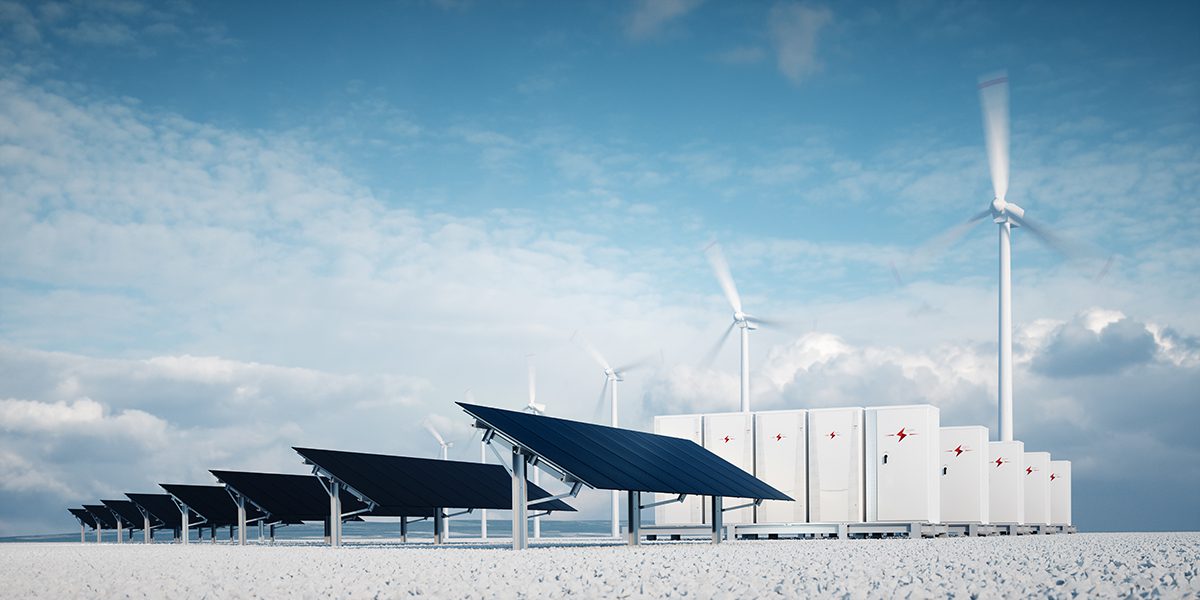U.S., European Legislation Puts Real Muscle into Clean Energy, Decarbonization, and Job Creation, but Must Evolve to Keep Up with Demand

COMMENTARY
With the passage of the Inflation Reduction Act (IRA) in December, the U.S. put some real financial muscle behind efforts to combat climate change and incentivize renewable energy with $370 billion in loans, grants, and tax credits to spur clean energy technology development, manufacturing, and job creation. Once the full potential of the bill is realized, federal clean energy spending created by the IRA over the next decade could reach $1 trillion, according to some experts.
The European Commission's proposed $270 billion Green Deal Industrial Plan-a comprehensive set of measures aimed at supporting the transition to a sustainable and circular economy-is poised to do the same by mobilizing investments in clean technologies, improving resource efficiency, and fostering greater energy independence in Europe.
This record-setting level of investment by the U.S. and European governments is creating unprecedented opportunities for technology providers and manufacturers, including Babcock & Wilcox (B&W). While the U.S. legislation alone has the potential to have the greatest impact on industrial policy since the New Deal, it will absolutely require public policy to work in harmony with private business and facilitate the explosive growth we are anticipating.
Process Changes RequiredFirst, we urge policymakers to modify their existing processes related to capital deployment through grants and loans by streamlining the process of document creation and review required to receive capital. The current process, which can take months to complete, favors companies that have significant resources to create documentation to satisfy onerous bureaucratic requirements, but not necessarily the technology providers with the best solutions to deploy. The revised process also should favor domestic providers who have the best technological solutions. Increasing the speed of public capital deployment will allow companies to develop new and creative ways to supplement government spending with private capital and more rapidly deploy cutting-edge technologies to combat climate change.
Second, and very importantly, legislators in the U.S. and Europe should make it a priority to accelerate the permitting process for new plants. If we are to truly make immediate and substantial impacts on greenhouse gas emissions and head off some of the worst potential effects of climate change, work must start immediately, and technologies and plants must be brought online as soon as possible without getting bogged down in months and months of red tape.
Credits Stimulate ProjectsWe're actively discussing potential projects with customers interested in taking advantage of these incentives. Some of the provisions of the IRA that customers are moving quickly to capitalize on include the following.
Section 45V-Clean Hydrogen Tax Credit. Clean hydrogen producers can qualify for up to a $3 per kilogram tax credit in 2023, with inflation adjustments in subsequent years. B&W's BrightLoop chemical looping process can help our customers unlock that tax credit by turning a variety of fuels-including biomass, natural gas, or coal-into hydrogen, while also capturing CO2.
Section 45Q-Tax Credit for CO2 Capture, Sequestration, and Storage. This provision in the IRA, which was originally enacted in 2008, is particularly valuable for industrial producers of cement, steel, chemicals, and other processes that generate CO2, as well as for power producers. The IRA increases the credit for captured and stored CO2 from $50 per metric ton to as much as $180 per metric ton. This increased incentive is a game-changer and will help accelerate wide scale deployment of carbon capture processes. B&W's BrightLoop technology as well as our SolveBright regenerable solvent and OxyBright oxy-combustion technologies are generating interest with our customers looking to take advantage of the 45Q credit. In fact, B&W's OxyBright technology will provide CO2 capture for Fidelis New Energy's Project Cyclus, a biomass-fueled plant that will provide power for the company's Gron Fuels sustainable fuel production facility at the Port of Greater Baton Rouge.
Section 48C-Expanded Qualifying Advanced Energy Project Credit. This program provides incentives for clean energy manufacturing and industrial decarbonization, and the IRA allocates $10 billion in new funding for the Qualifying Advanced Energy Project Credit program, including at least $4 billion for projects in communities with closed coal mines or retired coal-fired power plants. This is particularly important as hydrogen and renewables continue to displace fossil fuels like coal as the primary sources of baseload power generation and power for industrial processes. Bringing clean energy projects to communities where old power plants have closed will create new employment opportunities and needed baseload power.
Clean Energy Investment Will Spur Massive Payoff in Reducing EmissionsThe U.S. Department of Energy estimates that the clean energy provisions of the IRA and the Bipartisan Infrastructure Law together could reduce CO2 emissions by more than 1,000 million metric tons by 2030, equivalent to the combined annual emissions released from every home in the U.S.
Once enacted, the European Commission's Green Deal Industrial Plan will have an equally monumental impact on the drive to net-zero emissions, including:
- Accelerating the transition to a low-carbon economy and reducing greenhouse gas emissions by at least 55% by 2030 and achieving carbon neutrality by 2050.
- Creating new jobs in the clean energy sector, including jobs in renewable energy, energy efficiency, and circular economy industries.
- Promoting resource efficiency and a circular economy.
- Strengthening Europe's industrial competitiveness by promoting innovation and investment in clean technologies.
The U.S. and European plans incentivize investment in comprehensive strategies for promoting sustainable industrial practices and accelerating the transition to a low-carbon economy. We look forward to working hand-in-hand with customers, private equity, and other sources of capital, along with government representatives and decision-makers to capitalize on incentives and drive this energy transition forward.
-Kenny Young is CEO of Babcock & Wilcox.
The post U.S., European Legislation Puts Real Muscle into Clean Energy, Decarbonization, and Job Creation, but Must Evolve to Keep Up with Demand appeared first on POWER Magazine.